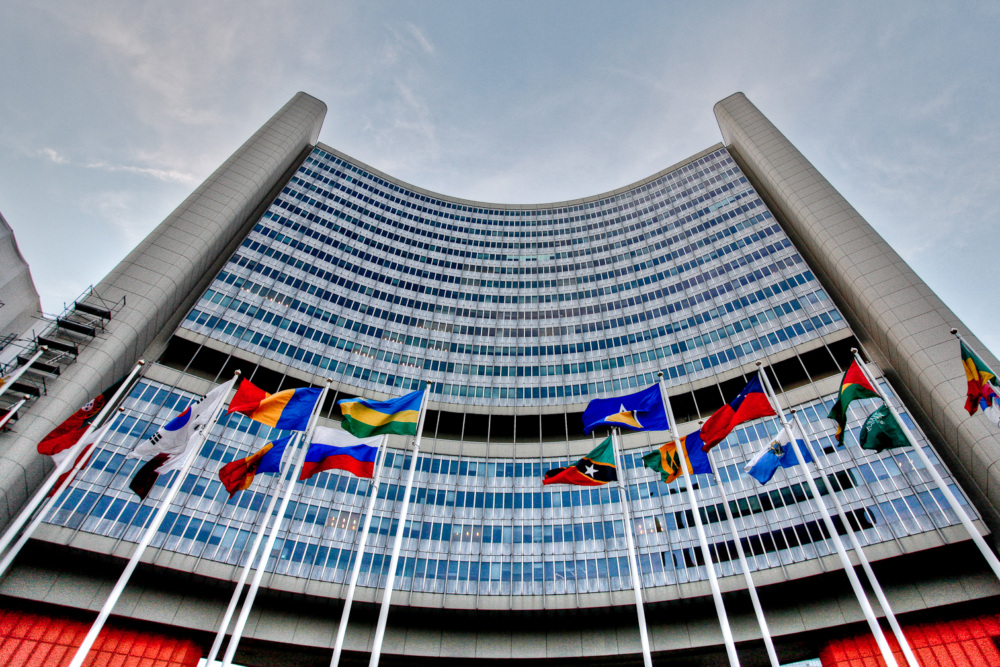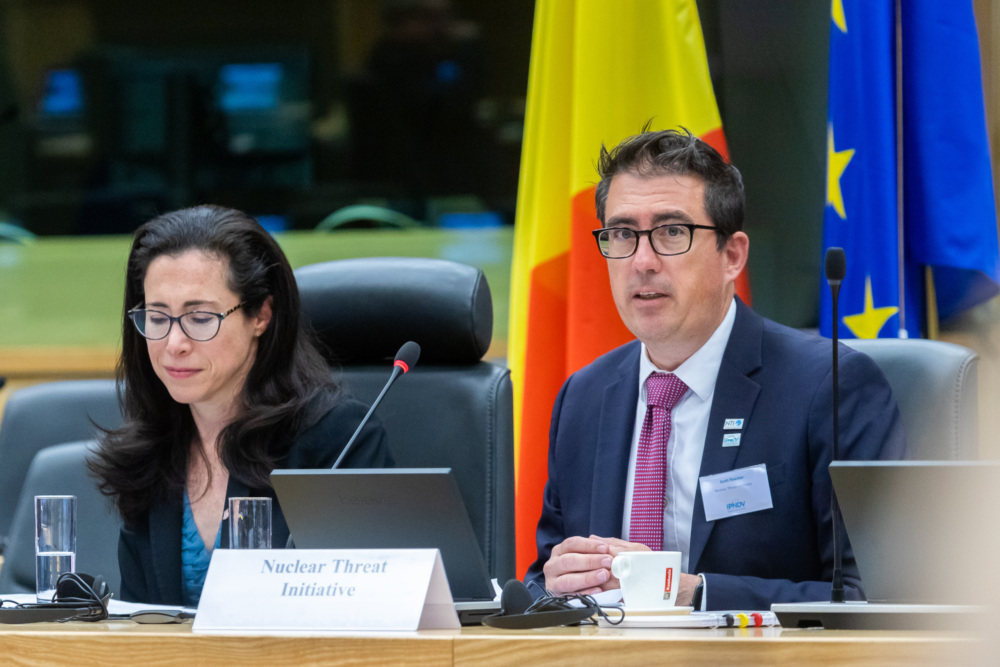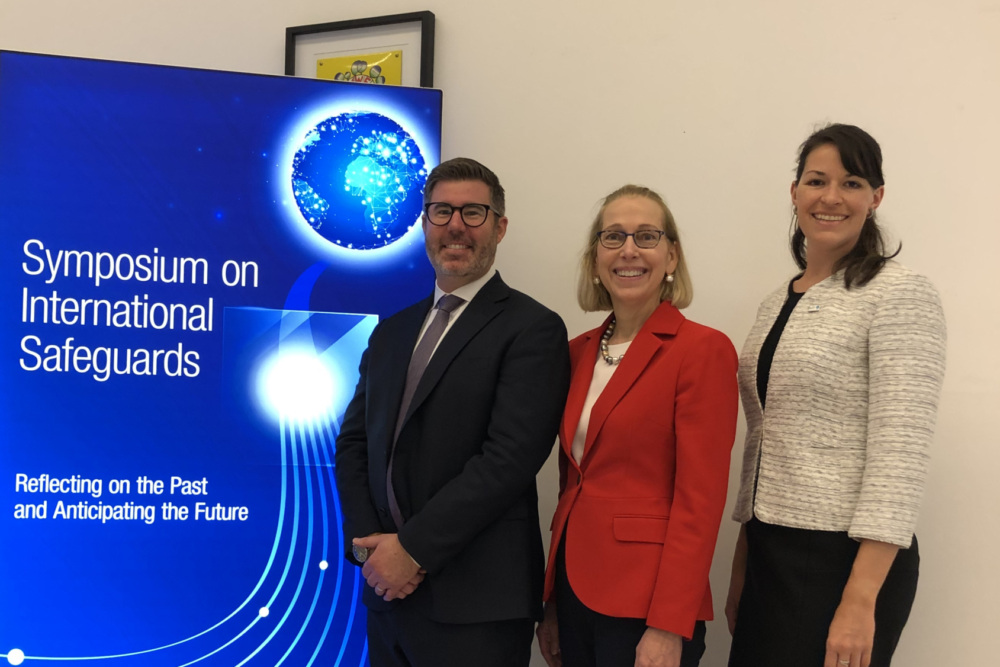
Esther Ko
Former Intern, NTI
Atomic Pulse
This post was written by Esther Ko, an intern on NTI’s Nuclear Materials Security team from May-August 2022. Esther is a Brumley Next Generation Graduate fellow at the Strauss Center for International Security and Law and second-year graduate student at the LBJ School of Public Affairs at UT Austin studying global policy.
U.S. federal law enforcement agencies are on alert this week due to a spike in violent threats against their officers and facilities in the wake of the FBI’s search at former President Donald Trump’s estate in Florida. Perhaps the most alarming potential threat reported by the U.S. Department of Homeland Security was that a radioactive “dirty bomb” would be placed in front of FBI Headquarters in Washington, D.C. The news is a stark reminder that domestic violent extremists pose a serious threat to the United States and our nuclear and radiological security.
Although disturbing threats are on the rise and it is well-known that extremists are interested in nuclear terrorism, an analysis of the threats domestic violent extremists pose to nuclear security in the United States was absent from a first-ever strategy on combatting domestic terrorism released by the Biden administration five months after the January 2021 insurrection at the U.S. Capitol—an event after which the administration labelled domestic violent extremists the “most urgent threat facing the United States today.”
Just a few weeks before the Homeland Security Department’s latest warnings put such extremists back in the headlines, a panel of experts spoke about domestic violent extremist threats to nuclear security at the Institute of Nuclear Materials Management’s (INMM) 63rd Annual Meeting. Panelists addressed the intersection of homegrown violent extremism and the security of nuclear facilities, including innovative approaches for identifying and preventing dangerous insider threats.
Dr. Jessica Stern, a research professor at Boston University’s Pardee School of Global Studies, outlined how nuclear terrorism could occur if “those who have the motivation to use…rudimentary nuclear weapons, those who have access to materials, and those who have the capability to use the weapons” come together. To date, terrorists and sub-state actors have been unable to commit an act of nuclear terrorism because they have not had the access or capabilities that Dr. Stern laid out, but she cautioned that we can’t expect domestic violent extremist groups to give up easily. These are apocalyptic, millenarian, and accelerationist groups such as ISIS or the Order of the 9 Angles, who, as former CIA Director James Woolsey said, don’t want a seat at the table, they want to blow up the table.
Panel members also touched on a topic security practitioners are particularly concerned about: insider threats. Dr. John Landers, a licensed clinical psychologist and senior research and development staff member at Oak Ridge National Laboratory, emphasized that the unique danger of insider threats is that they have all three components Dr. Stern explained are necessary for nuclear terrorism: motivation, access, and capability.
As with acts of sabotage, insider threats often stem from individuals who have demonstrated unusual behavior, which, although it may escalate over time, is often dismissed or avoided by co-workers. Dr. Landers suggested that workplaces move away from a “profiling” model for insider threat prevention and instead develop a “risk-mitigation” model, which interprets concerning behavior as a signal of something that could happen in the future. The goal of threat mitigation is to help a struggling employee and remind them of their place in their community, not to out them as a security risk and potentially cause more harm.
Dr. Leesa Duckworth, a national security specialist at the Pacific Northwest National Lab, highlighted the need for organizational initiatives to address insider threats not only from a security perspective, but also from a human perspective. Individuals who feel socially excluded from teams, conversations, and opportunities may self-isolate, which makes them increasingly susceptible to misinformation and more likely to lose their connection to the organization’s vision and goals. To mitigate these risks, organizations must take ownership of their role in supporting their employees’ needs and take steps to bring isolated individuals back into their community.
Dallas Boyd, executive director and chief of staff in the National Nuclear Security Administration’s (NNSA) Office of Counterterrorism and Counterproliferation, shed light on how the NNSA thinks about insider threat mitigation. He shared that the NNSA, which is responsible for U.S. nuclear weapons laboratories and production facilities, maintains a multilayered defense posture to protect nuclear facilities, weapons, and materials from foreign and domestic adversaries, including trusted insiders. With multiple investigation and evaluation procedures, as well as security measures that require employees to work in groups to prevent lone individuals from accessing materials, the NNSA has created an environment where concerning behaviors are more likely to be detected and disrupted. Despite the progress of the NNSA on this issue, Boyd and others recognized the need for continuous improvements to the security posture of the U.S. nuclear complex, using every available technological, legislative, and regulatory tool, as threats continue to evolve.
Dr. Landers recommended one such tool for better responding to concerning behavior. For years, people have been taught to “see something, say something” when they encounter something suspicious. However, Dr. Landers pointed out that this message dehumanizes and marginalizes people who need help. Instead, he recommended we adopt the philosophy of “see somebody, be somebody.” Treating our colleagues like people, and not as potential threats, could be one of the keys to bringing someone at risk back from the brink.
Sign up for our newsletter to get the latest on nuclear and biological threats.
Governments should use the 2024 International Conference on Nuclear Security (ICONS) to reaffirm their commitment to preventing nuclear catastrophe.
Scott Roecker, vice president of the Nuclear Materials Security team, sat down with NTI's Mary Fulham for the latest in Atomic Pulse's "Get to Know NTI" series.
NTI played a prominent role in this year’s IAEA Symposium on International Safeguards. Learn more about our what our experts were up to through this photo blog.



